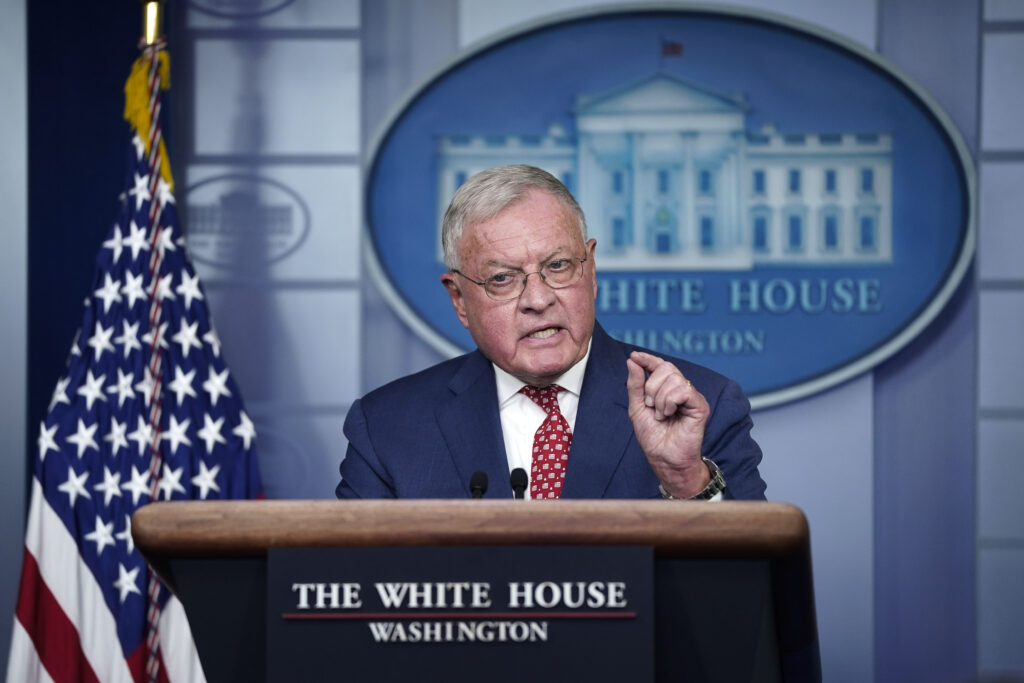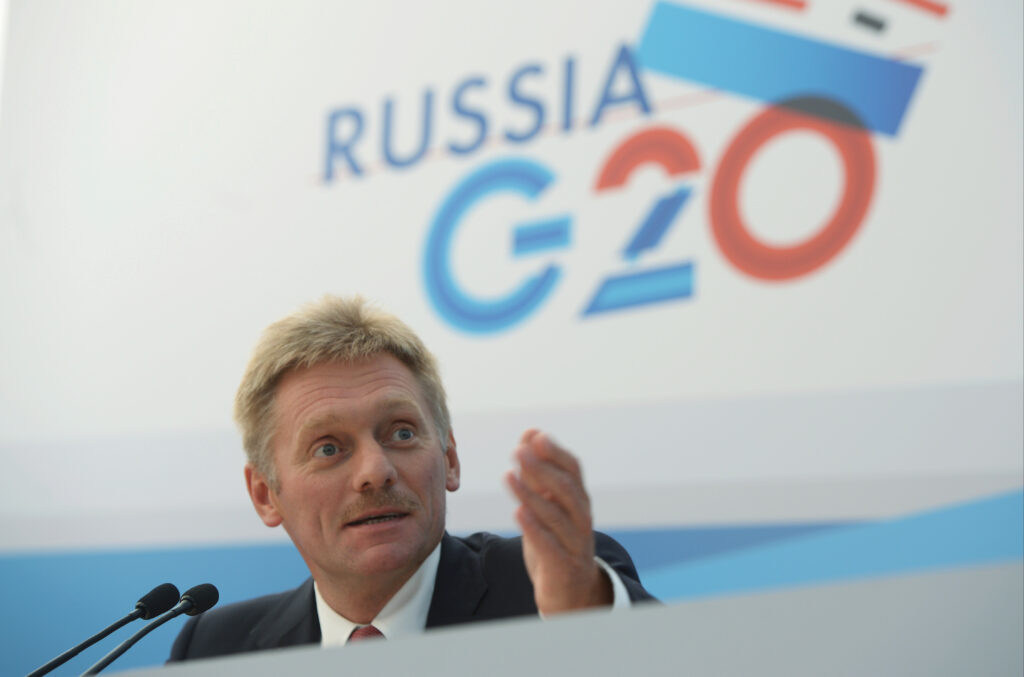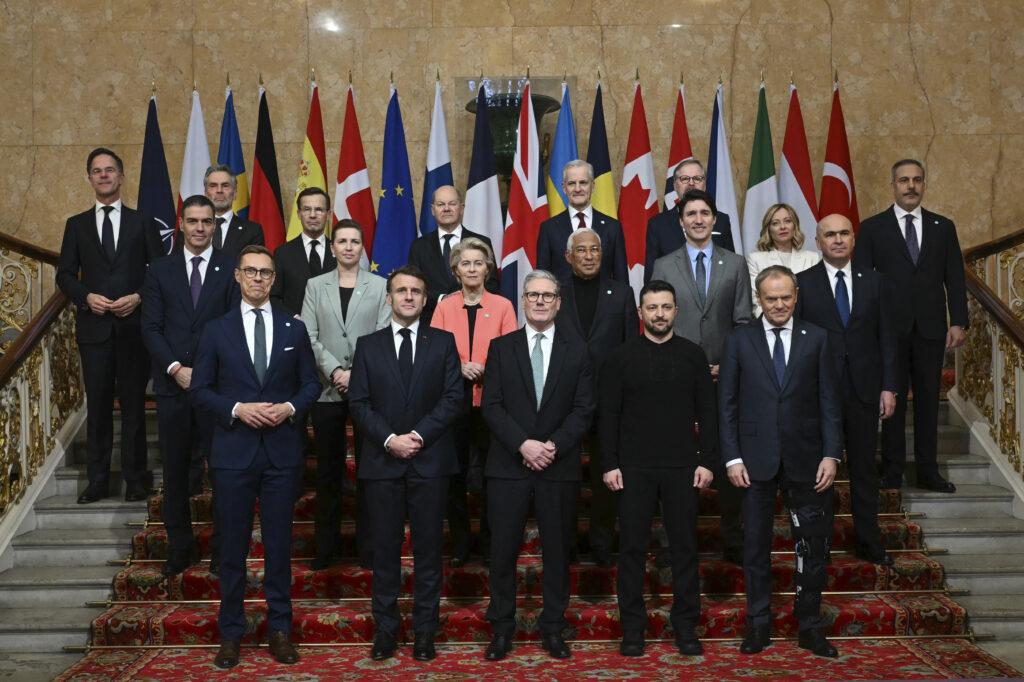As President Trump Prepares To Speak to Congress, He Pauses Delivery of American Military Aid to Ukraine
The Kremlin starts speaking of what it calls America’s new ‘alignment’ alongside Russia, hailing aid cutoff as the ‘best contribution to the cause of peace.’

As President Trump prepares to speak to Congress this evening, the Administration is pausing delivery of all new military aid to Ukraine. On one level, this holdup of congressionally approved aid is a sweetener to induce Russia to negotiate an armistice. On another level, it is designed to twist President Zelensky’s arm and force him to apologize to President Trump for last Friday’s verbal clash at the White House.
The Kremlin’s spokesman, Dmitry Peskov, responded with caution, Reuters reported. “If this is true, then this is a decision that can really encourage the Kyiv regime to (come to) the peace process,” he said. If America cuts off its support for Ukraine’s war effort, Mr. Peskov added, “it will probably be the best contribution to the cause of peace.”
Ukraine’s prime minister, Denys Shmyhal, on Tuesday averred that his country’s “military and the government have the capabilities, the tools, let’s say, to maintain the situation on the frontline.” The prime minister added that “we will continue to work with the U.S. through all available channels in a calm manner.”
Mr. Trump wants Ukraine to sign a rare earths mining contract with America. News reports last night said the freeze stops shipment of all American arms and military equipment that are still outside of Ukraine. White House officials interviewed by news agencies did not say how long the freeze will last.
In recent days, Kremlin officials have spoken approvingly of what they call America’s new “alignment” alongside Russia. Yet Russian officials have not given concrete signs that they are interested in negotiating an end to the 3-year-old war. Yesterday, Mr. Peskov had told Russia’s RIA agency that it is “unlikely” that Russia and America will meet again soon to discuss peace in Ukraine.
Trump administration officials say the freeze was triggered by Mr. Zelensky saying yesterday that peace is “very, very far away.” This enraged Mr. Trump, who campaigned for a second term saying that he would stop the war on his first day in office. Later, his chief Russia-Ukraine envoy, Keith Kellogg, a retired lieutenant general, moved the goal post to 100 days after the January 20 inauguration.

With late April fast approaching, some analysts now predict that Mr. Trump wants a deal by May 9, the day the Kremlin holds in Red Square a parade to celebrate the Soviet Union’s victory over Nazi Germany. This May, the thinking goes, President Trump would like to share the reviewing stand — and the world press spotlight — with President Putin. Though Mr. Putin reportedly extended an invitation, Mr. Trump has denied that he would attend.
“This is the worst statement that could have been made by Zelenskyy, and America will not put up with it for much longer!” Mr. Trump posted yesterday on Truth Social, referring to the “very, very far away” peace prediction. “This guy doesn’t want there to be Peace as long as he has America’s backing and, Europe, in the meeting they had with Zelenskyy, stated flatly that they cannot do the job without the U.S.”
As the Trump-Zelensky relationship went off the rails last week, analysts preemptively assessed how far Ukraine could go without American aid. Since Russia’s invasion of Ukraine three years ago, America has supplied $119 billion in military and non-military aid to Ukraine, according to a German think tank, the Kiel Institute. Aid from Britain and the European Union total $232 billion, nearly double the American amount.

If the European aid continues or increases, Ukraine can “hold out for an indefinite period,” a retired American admiral, James G. Stavridris, told CNN Saturday. A decade ago, Admiral Stavridis was Supreme Allied Commander Europe for the North Atlantic Treaty Organization.
With members of the North Atlantic Treaty growing nervous about a possible Trump pullout from the alliance, the leaders of Europe’s 18 largest countries met Sunday at London with Mr. Zelensky. The goal was to work out a “coalition of the willing” to forge a support plan for Ukraine. Expanding this effort, leaders of all 27 European Union member states are to meet Thursday at Brussels to pledge greater defense spending and aid to Ukraine.
Ukrainians and Europeans are working feverishly to establish supply channels for spare parts for American-made NATO-standard equipment. In what is often called an artillery war, Ukraine fires 5,000 155-mm shells a day, about 2 million a year. Although the American Army’s main plant in Pennsylvania is a prime supplier, Ukraine is diversifying. Norway and Germany are building artillery shell plants in Ukraine.
Estonia and the Czech Republic each now supply about 1 million shells a year. After Friday’s shocking meeting in the White House, Chancellor Olaf Scholz wrote on X: “Ukraine can rely on Germany — and on Europe.”
In the increasingly important drone war, Ukraine is largely self-sufficient, relying on indigenous designs and parts. Ukraine’s new fear is that President Trump’s political partner, Elon Musk, will cut off access to his Starlink satellite telecommunications network. The Ukrainian military reportedly is working with European providers to set up alternative communications systems. It is unclear if the Pentagon will continue to share intelligence with Ukraine on target identification and missile launches.

A major part of the three-way standoff is that the Kremlin and the White House say Russia is winning the war. Ukraine believes it is holding its own. Largely hunkered down in a defensive crouch, Ukraine recorded last month the largest number of Russian vehicles destroyed in three years. According to Ukraine’s defense ministry, Ukrainian soldiers destroyed 331 Russian tanks, 596 armored combat vehicles and 3,472 vehicles and fuel tanks.
According to the same tally, Russia lost 36,570 soldiers killed or seriously wounded in February. This would bring the total to 875,610 since the start of the war. At current rates, Russia’s losses — killed and severely wounded — would hit the 1 million mark this summer. By contrast, about 75,000 Soviet soldiers were killed or severely wounded in Afghanistan in the 1980s.
Although last year was the bloodiest year of the war for Russia, its territorial gains were insignificant — about 1,000 square miles, or a half of one percent of Ukraine’s land mass. Short of soldiers, Russia resorted last fall to importing North Korean mercenaries to try to drive Ukrainian forces from 250 square miles of Russian land in the Kursk region. Seven months after the invasion, the Ukrainians are still there.
Elsewhere, in Toretsk and around Pokrovsk, Russian troops have recently made small retreats. Russian military bloggers blame the Toretsk retreats on Russian commanders lying about advances to win praise from their superiors.
“Russia actually is in big trouble,” a retired American general, Ben Hodges, told CNN last night. “The premise that the administration is using when they say, ‘Ukraine, you have no cards’ — that’s just not true. The Russians are in big trouble. The Ukrainians have stopped them without us even committing to helping them win.”
Ukrainian drone operators have not gotten the White House-Kremlin memo, so to speak, that they are losing. In the last week alone, long-range drones hit and sparked major fires in oil refineries in Bashkortostan, Ilsk, Novoshakhtinsk, Ryazan, and Tuapse, and a pipeline in Rostov. The drones that hit the refinery in Ufa, Bashkortostan flew 900 miles east Ukraine. This year, Ukraine plans to triple its drone production, to 4 million, many of them long range.
Smartphone videos of these refinery fires are all over the Internet. The fires appear on open source monitoring photos by NASA. However, for Mr. Putin, these attacks take place in the Russian equivalent of flyover country and can be ignored.
“President Vladimir Putin, whose disinformation campaign has clearly influenced the Trump administration, will continue his onslaught in Ukraine to solidify the notion only Russia can win this war,” a former Pentagon strategist, Mick Ryan, wrote for Australia’s Lowy Institute. “It isn’t true, but that doesn’t matter. If the Trump administration believes it, facts have no bearing.”

